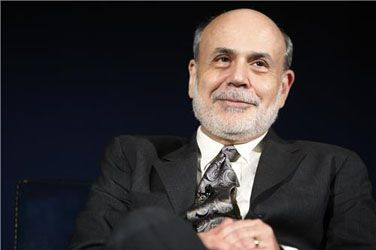Surprise! The Big Taper 'Clue' That Wasn't There [VIDEO]

U.S. stocks closed flat on Thursday, as investors weighed mixed data a day after the Federal Reserve revealed plans to taper its $85 billion-a-month bond-buying program by $10 billion in January. Despite a mixed session, the Dow rose to a record closing high for the second time in a row.
The Dow Jones industrial average rose 11.11 points, or 0.07 percent, to close at a record high of 16,179.08. The S&P 500 Index fell 1.05 points, or 0.06 percent, to close at 1,809.60. The Nasdaq Composite Index lost 11.93 points, or 0.29 percent, to finish at 4,058.13.
Following record closing highs for both the Dow and S&P 500 on Wednesday, some investors were surprised to hear the Federal Open Market Committee announce plans to scale back the central bank’s stimulus program. An indicator investors were looking to for clues as to whether the Fed would taper at its Dec. 17-18 meeting was the 10-year treasury yield. Some investors thought if the 10-year yield rose above 3 percent, it would be a good indication the FOMC would announce tapering. The 10-year yield was at 2.86 percent on Wednesday ahead of the announcement.
“Most people I spoke to did not think we were going to taper,” said Alan Valdes, vice president of trading at DME Securities. “I mean, 30 percent thought we were, 70 percent said we’re not going to taper till January, February, March. March probably the earliest. The 10-year started to tick up very lightly after that, but now it’s accelerating. Like I said, you were right. It was 2.86 [percent] yesterday. Right now we’re at 2.93 [percent]. So it’s really moved up. We’re getting toward that three. That’s going to be critical. That’s, going forward, the most important thing. Can the Feds keep interest rates down? If they can’t, I think you’ll lose a lot of consumer confidence, and it’s going to be tricky.”
On Thursday, the U.S. 10-year yield jumped to its highest in three months following the Fed’s taper announcement a day earlier. According to Bloomberg data, the treasury 10-year yields increased four basis points, or 0.04 percentage point, to 2.93 percent at 4:20 p.m. Eastern. At Wednesday’s close, the 10-year treasury yield moved up 4.2 basis points to 2.885 percent.
“I think you’ve got to keep an eye on that 10-year,” said Valdes. “The 10-year is now at 2.9 percent. Last time it got to this range it caused problems in India, in Brazil and here in America. So we’re going to keep an eye on that.”
Economic data this week revealed a mixed outlook on the housing front. The National Association of Realtors on Thursday said existing-home sales for November fell to the lowest level in nearly a year, as home resales were down 4.3 percent last month to an annual rate of 4.90 million units. Earlier on Wednesday the Commerce Department released data that showed housing starts jumped 22.7 percent last month, the highest level since February 2008, to a seasonally adjusted annual rate of 1.09 million units.
Separate data on Thursday sent U.S. stocks down in early trading after the Labor Department said the number of American filing for unemployment benefits last week hit a nine-month high. Initial jobless claims last week rose by 10,000 to a seasonally adjusted 379,000.
Ahead on the economic calendar for Friday, investors will eye the final revision of third-quarter GDP, along with corporate earnings from BlackBerry Ltd. (NASDAQ: BBRY), CarMax, Inc. (NYSE: KMX) and Walgreen Company (NYSE: WAG).
© Copyright IBTimes 2025. All rights reserved.






















